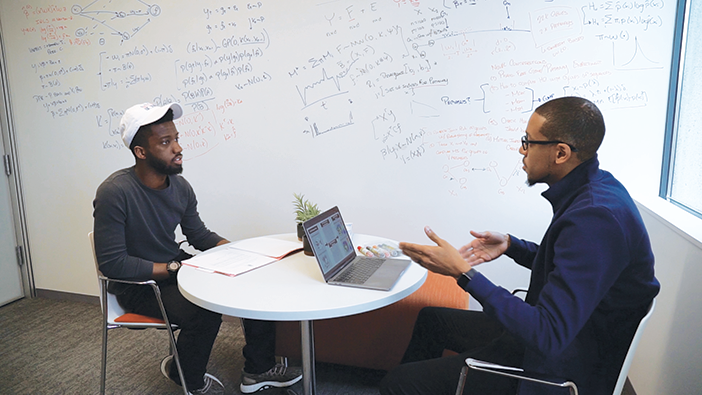AI can’t replace doctors, but it could help them do their job.
With everything physicians have to juggle just to get their job done, wouldn’t it be nice to have a little mechanical assistance?
That’s just what artificial intelligence in medicine aims to provide. Machine-learning applications can facilitate decision-based medical tasks to support and improve the performance of human care providers. The goal isn’t to replace the physician, but to make their job easier and patient outcomes better. As a Program in Liberal Medical Education concentrator in applied math and biology, Chibuikem Nwizu ’17 MD’21 PhD’23 wanted to apply the power of machine-learning tools to stem cell biology.
“I was looking to see if there was a way that I can use my skill set and apply it to this new area,” Nwizu says. He found the stem cell lab of Peter Quesenberry, MD, the Paul Calabresi, MD, Professor of Oncology, where Theo Borgovan F’20, MD, a hematology/oncology fellow at Rhode Island Hospital, was doing research. They were happy to teach Nwizu the wet lab techniques to isolate stem cells.
But Nwizu also needed a mentor in computational science. Enter Lorin Crawford, PhD, assistant professor of biostatistics at the School of Public Health. While not quite familiar with stem cell biology, Crawford says “a lot of my work is motivated by genetics and genomics and we use computational methods to solve complex problems in that broad space.”
So he was definitely interested in working with Nwizu: “It’s like a wide-open, wild, wild West-type thing,” Crawford says. “We were in a cool space to do something really special.”
Borgovan studies extracellular vesicles—the carrier pigeons found in all cells that relay messages to other cells. Sometimes the message is good, and helps cells heal or grow; sometimes it’s a nastygram of toxic information, such as cancer. When Borgovan began isolating EVs from patients with leukemia, he found that healthy EVs can protect other healthy cells, and even kill cancer cells apoptotically, so the cell implodes and causes no subsequent immune reaction.
Nwizu, Crawford, and Borgovan began brainstorming research questions that would meld the wet lab with the computer lab. What if they could teach a computer to differentiate the good from the bad EVs at a glance? Let’s say a patient has been treated for leukemia and is monitored for recurrent disease. The physician could load the blood sample into the computer and the algorithm could recognize the slightest changes in EVs, detecting recurrent disease early.
“This is where it’s so great that we have all this patient data,” Borgovan says. Matching the molecular to the clinical outcomes is a powerful tool in machine learning.
“Using the vesicle profile, we could come up with a diagnosis and as we acquire more samples and patient data, the algorithm will also be able to come up with a prognosis,” he says.
The algorithms are intended to improve the diagnostic process, Crawford says. “There are elements about a patient that only the clinician who sees that patient can know—‘this patient can’t have this treatment because of X, Y, and Z that the algorithm doesn’t know.’ But if we can help find a starting point, we can allow physicians to focus on the parts only they can do.”
As a future physician, Nwizu agrees: “Any good tool will not replace the wielder of the tool. It just augments the wielder’s accuracy and efficiency.”




